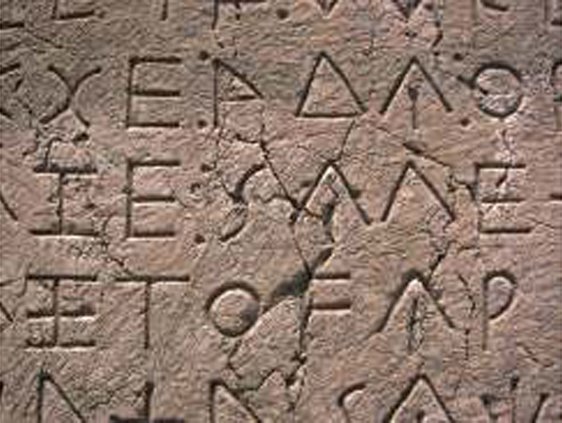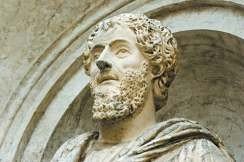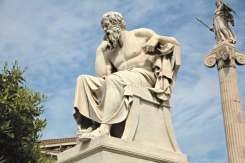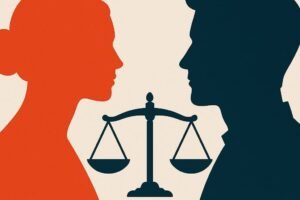Contours of Greek education
Ancient Greek and Roman philosophers as well as the poets like Thanes, Socrates, Plato, Aristotle, Plotinus, St. Augustine, St. Aquinas and Homer, have left such a powerful influence on the educational, philosophical and cultural ethos of the western world (mainly Europe and therefore, North America) that it is being felt even today after more than three millennia.
The last article in the February 2008 issue of Eternal Voice gave us a panoramic view of education and related activities in various ancient civilizations of the world.
The current article looks at the contribution of ancient Greek and to some extent, Roman civilization to the process of education. It must be understood at this stage that the ancient Greek and Roman philosophers as well as the poets, like Thanes, Socrates, Plato, Aristotle, Plotinus, St. Augustine, St. Aquinas and Homer, have left such a powerful influence on the educational, philosophical and cultural ethos of the western world (mainly Europe and therefore, North America) that it is being felt even today after more than three millennia.
The earliest Greek civilization is referred to as Mycenaean civilization (about 1400-1100 BC), which itself arose from the civilization of Minoan Crete. Mycenaean education system was primarily meant for training of scribes, similar to those of the ancient Middle East civilizations. However, during the dark ages of Greek history (1100-800 BC), even this system collapsed, and when it reappeared after 800 BC, it took a totally new direction as idealized in Homer’s ‘Illiad’ and ‘Odyssey’ (two epic poems comparable to the Mahabharata and the Ramayana).
Reverence for Homer was at such an exalted level, that it influenced Greek education in terms of encouraging ‘hero worship’ and ‘virile athleticism’, which in turn, led to the birth of Olympic Games, dating from 776 BC.
At that state of time (about 8th-7th Century BC), Greece consisted of a number of city states, the education system wherein included training in martial arts. This encouraged individuals to subordinate their individualities to that of the State.
Sparta Among various city states, the most flourishing and powerful were Sparta and Athens. In the Spartan education, military and civic aspects dominated, as in those times, each citizen-soldier was expected to be ready to fight and, if necessary, to die for his city (country).
This last aspect became almost exclusive around 550 BC, when education of girls was subordinated to their future role as mothers with a strict eugenic regime, which eliminated sick and deformed children. While on the other hand, boys’ education was focused to create men of warrior caste. Children, up to an age of seven, were used to be brought up by mothers in severe and harsh atmosphere. From the age of 7 to 20 years, their education was totally controlled by the State.
Male youths were enrolled into formations, corresponding to the age group of the children. Collective education was thus aimed at eventual military service. Youths were also trained in the use of arms, art of ambush and maneuvering in close formations and strict discipline to obey blindly the orders of superiors.
This type of martial education enabled Sparta to remain, for long, the most powerful city in the entire Greek world, and to triumph, eventually, over its rival, Athens. This approach to education, however,

did not prevent Sparta’s eventual decadence, when it became a part of the Roman Empire with neither independence nor army. (In the author’s opinion, this was perhaps due to lack of sufficient emphasis on ethical and moral values in the Spartan educational system).
Athens
In contrast to Sparta, Athens was the first Greek city state to renounce education oriented to exclusive military service (7th-6th Century BC), though Athenian citizens were always obliged to fight for the fatherland whenever necessary. This was mainly a result of democratization of Athenian life.
As against exclusive control of the State on education, private schools began to appear around 491 BC, and such schools were referred to as Schole. Different aspects of education were conducted at different places. The elements of literacy were taught by the writing master known as grammatistes, the child learning his letters and numbers by scratching them on a wax coated wooden board. In addition, all the boys were instructed in physical and military activities in the wrestling school which was a part of more comprehensive institution of the gymnasium.

Athenian ideals emphasized on the development of ‘wise and good’ men. Therefore, teachers laid great emphasis on a child’s good conduct and formation of his character.
Higher Education
A system of higher education emerged with the appearance of the Sophists, mostly foreign teachers who were contemporaries as well as adversaries of Socrates (470-399 BC). Since Greece was increasingly veering to democracy, participation in public affairs became the supreme occupation of the aristocrats and the leisurely class, particularly those with political ambition.
The Sophists introduced a form of higher education which was oriented to political participation, the art of persuasive speaking or rhetoric, so as to make one’s point of view prevail on every occasion.

The pedagogy of the Sophists was opposed by the activities of Socrates, who was alarmed by their radical utilitarian approach. Socrates held that the supreme ideal of man and hence education, should be the search for the absolute, virtue, knowledge and understanding rather than the pursuit of power, utility and efficiency.
It was at the beginning of the fourth century BC that the classical higher Greek education got better organized due to the joint but rival efforts of the two great educators, the philosopher Plato (428-348/347 BC) who opened his school, the Academy (387-338 BC) and the orator Isocrates (436-338 BC), who founded his school in about 390 BC.
Plato was the most distinguished student of Socrates. After Socrates was made to drink the poison hemlock by the Athenian senate for teaching ideas that were considered to be seditious, he left Athens for 10 years traveling the Mediterranean. On his return, he found his school of philosophy dedicated to an early Greek hero, named Academos, and hence known as the Academy. A select band of scholars engaged themselves in various philosophical discourses in preparation for their role as future leaders. Plato believed that the basis of good government was an educated society, in which, the kings were philosophers and philosophers, the kings (like Raja Janak).

Plato’s educational program is set out in his most famous dialogue, the Republic. The world, he argued, has two aspects: the visible, which is perceived with the senses and the non-visible, which consists of universal and eternal forms or ideas that are comprehensible only by the mind. Human experiences of the so-called reality, according to Plato, are only visible ‘appearances’, and from these, only opinions and beliefs can be derived. According to him, most people remain locked in this visible world of opinion. Only a select few, through a rigorous 15 years’ program (one of the higher education devoted to the study of dialectics and mathematical
reasoning), can attain an understanding of genuine reality, which is composed of such forms as goodness, truth, beauty and justice.
Plato maintained that only those individuals, who survive this program, are really fit for the highest offices of the State – those of maintaining and dispensing justice.
The rival school of Socrates was much down-to-earth and practical. It too aimed at cultivation of wisdom in the pupils in a more practical order based on working out common-sense solutions to life’s problems. In contrast to Plato, Socrates sought to develop the qualities of grace, cleverness or finesse. The program of study laid emphasis on literature – Homeric classics, gymnastics and music. It also laid great emphasis on extensive study of rhetoric consisting of five to six years of theory, analysis and imitation of the great classics, and finally practical exercises.
These two parallel forms of culture and higher education, however, were not totally in conflict; both opposed the cynical pragmatism of the Sophists, each influenced the other in a number of ways. Isocrates did promote elementary mathematics as a kind of mental training, and did allow for a smattering of philosophy to illumine broad questions of human life.

Plato, for his part, recognized the usefulness of the literary art and philosophical rhetoric. The two traditions continued from generation to generation, enriching classical culture without jeopardizing its unity.
Aristotalian Education
Aristotle (384-322 BC) was Plato’s pupil. His claim to fame partly rests on the fact that he was tutor to Alexander, the Great of Macedonia. He believed that education should be controlled by the State, and its main objective should be training the citizens. The underlying rationale of his educational philosophy was the emphasis laid on logical structure, classification and systemization.
Thus in the first phase (from birth till the age of seven), the emphasis was on the physical development of the child and developing endurance and ability to face hardship. From the age of seven years to puberty (about 12 to 14), his curriculum would include the fundamentals of gymnastics, music, reading, writing and enumeration (arithmetic). From puberty to age of 17, the student would be more concerned with exact knowledge not only carrying on with music and mathematics but also exploring grammar, literature and geography. Finally, only a few superior students would continue into higher education, developing encyclopaedic and intensely intellectual interests in the biological and physical sciences, ethics, rhetoric, as well as philosophy. Aristotle’s school, the Lyceum, was thus more empirical than Plato’s Academy.
The Hellenistic Age
The zenith of the Greek culture and education was reached shortly before Alexander appeared on the world’s scene. His conquest of the Persian Empire (between 334 and 323 BC) extended the area of Greek influence from the Aegean Sea to the Indus River in Central Asia (India). This sudden expansion of Macedonian (Greek) Empire threw up many social challenges, including those of education and the Greek way of life. This period of Hellenistic Age has been referred to as a civilization of paideia, wherein individuals achieved enlightenment and matured self-fulfillment through education. The Greek succeeded in preserving their distinctive national way of life amid this immense empire, because wherever numbers of them settled, they brought with them, their own system of education for their children. This enabled them not only to maintain their own identity but also something that enabled them to spread Greek culture to many of the alien elite.

Hellenism’s world-wide influence, however, ended with the Persian national renaissance and the invasions originating from Central Asia (beginning 2nd century BC). But it continued to flourish under Roman domination in the Mediterranean world till the Byzantine civilization and education came into existence some time in 330 AD.
Hellenistic education can be perceived in four parts: physical education, primary, secondary and higher education.
Physical education
The focus of physical education was the gymnasium. In large cities, there were, generally, several gymnasia, separately for different age groups, and on occasion for the sexes. Essentially, they were open-air square-shaped sports grounds, surrounded by colonnades, in which were set up cloakrooms, wash stands, training rooms, massage rooms and class rooms. Outside, there was a track for footraces, the Stodion.
The foundation of the training consisted of the sports called gymnastics and the field. Horsemanship remained an aristocratic privilege. Nautical sports like swimming, sailing, yachting etc., had a very modest role. As the competition of professional sports grew, education based on sports, very slowly, lost its pre-eminent position. The popularity of athletic sports as a spectacle, endured, but educational sports moved to the background; disappearing altogether in the Christian period (4th century AD) in favor of literary studies. There was also progressive decline of artistic, particularly musical education. Like sports, it became the concern of professional practitioners.

The primary school
The children from seven to 14 years of age went to school of letters, conducted by pedagogies, who educated them in good manners, morals and as a lesson coach. Literacy and numeration were taught in the private school conducted by grammatistes. The size of the class varied from a few pupils to a few dozens. First, the alphabet was taught from alpha to omega, and then backwards, and then from both ends at once, like alpha omega, beta psi, and so on to mu nu. Then came simple syllables ba, be, bi, bo followed by more complex ones, and so on. It took several years for the child to read connected text, which used anthologies of famous passages with reading associated to recitation and practice in writing.
The program in mathematics was limited, consisting of learning whole numbers, fractions, their notations, their representation in finger counting and by tokens and abacus.
Secondary education
Between the primary school and the different types of primary education, there was a program of intermediate preparatory studies, called enkyklios paidia (general or common education). This consisted of the study of literature and mathematics. The mathematics program consisted of arithmetic, geometry, astronomy and harmonics the numerical laws regulating intervals and system.
The program of this intermediate education attained its zenith some time in second half of first century BC, when it consisted of seven liberal arts – three liberal arts of grammar, rhetoric and dialect, and four of mathematics, mentioned in the previous paragraph.
Higher education
This appeared in several forms. First was the ephebeia (“youth” culture), a kind of civic and military training that completed the education of young Greek. It was of two years’ duration and closely corresponded to the obligatory military service in the modern state. To this military service were added lectures on scientific and literary subjects, assuring the ephebe certain polish of general culture. It particularly suited those Greeks and their sons, who had settled abroad, so that these children could legitimize their privileged status in the foreign lands, especially in Egypt.
Training and higher education were not much institutionalized, except the fact that there were some establishments having scientific staff competence. Of these, the most important was the Mouseion (museum) established at Alexandria, richly endowed by Ptolemy, which was initially an institute of advanced research where scholars in different disciplines informally instructed a small circle of chosen few disciplines.

The same character of personal training was seen in the field of medicine, which saw fine development during the period of Hippocrates (5th century BC), and that of Galen (2nd century AD). Here, the learning was by ‘association’ with the practicing expert physicians while visiting the bed-sides of the patients.
Philosophy and rhetoric were the most institutionalized subjects of deduction. The teachers in the above-mentioned subjects were well-organized in some sort of brotherhood, where the posts in teaching as well as administration were passed on in a hereditary fashion. Philosophical study was more focused on the duties and character of the sovereign, the sovereign king and the purpose that man should set for himself so as to achieve happiness – the supreme ideal. Pursuit of philosophical studies appealed to only a small number within the Hellenistic intelligentsia. (This is true even today!).
The reigning discipline was always rhetoric. This was due to political and legal exigencies for making representations in the court of the sovereign. Thus, eloquence imposed its rule on all literary genres – poetry, history and philosophy. Teaching of rhetoric thus gained ever greater importance from century to century. This study of rhetoric had five parts: invention (the art of finding new ideas), disposition (arrangement of words and sentences), elocution mnemonics (memory training), and action (the art of self presentation, voice modulation and delivery), and the art of expressive and reinforcing gestures. Each of these parts was equally systemized to the smallest detail, and was taught with a technical vocabulary of extreme precision. It also required the study and imitation of great examples (from literature and history). In fact, even in maturity, a Hellene continued to deepen his knowledge of art and drill himself in rhetoric.
The influence of Hellenic civilization and its educational system continued even under Roman domination, and many a center of learning developed in Asia Minor (Rhodes, 1st century BC), Smyrna (2nd century AD), Alexandria, Beirut, Antioch and Constantinople. The quality of teachers and the number of students were such, that these centers resembled modern universities!
This, in short, is the story of the evolution of Hellenic or Greek Education, which has exercised tremendous influence on western thought over the centuries.

Essence of Sikhi
Acknowledging Shabad as Guru and acting upon precepts given by Gur-shabad awakens awareness of such intensity that one lives no more in self-deception. Those who are able to do so are worth going many a mile just for a glimpse. By so doing one is strengthened in one’s resolve to dedicate oneself to Gur-shabad. Even at the simple level of daily living one learns to distinguish between right and wrong, good and evil, virtue and vice when one submits oneself to the discipline of naam-simran and Gur-shabad.






